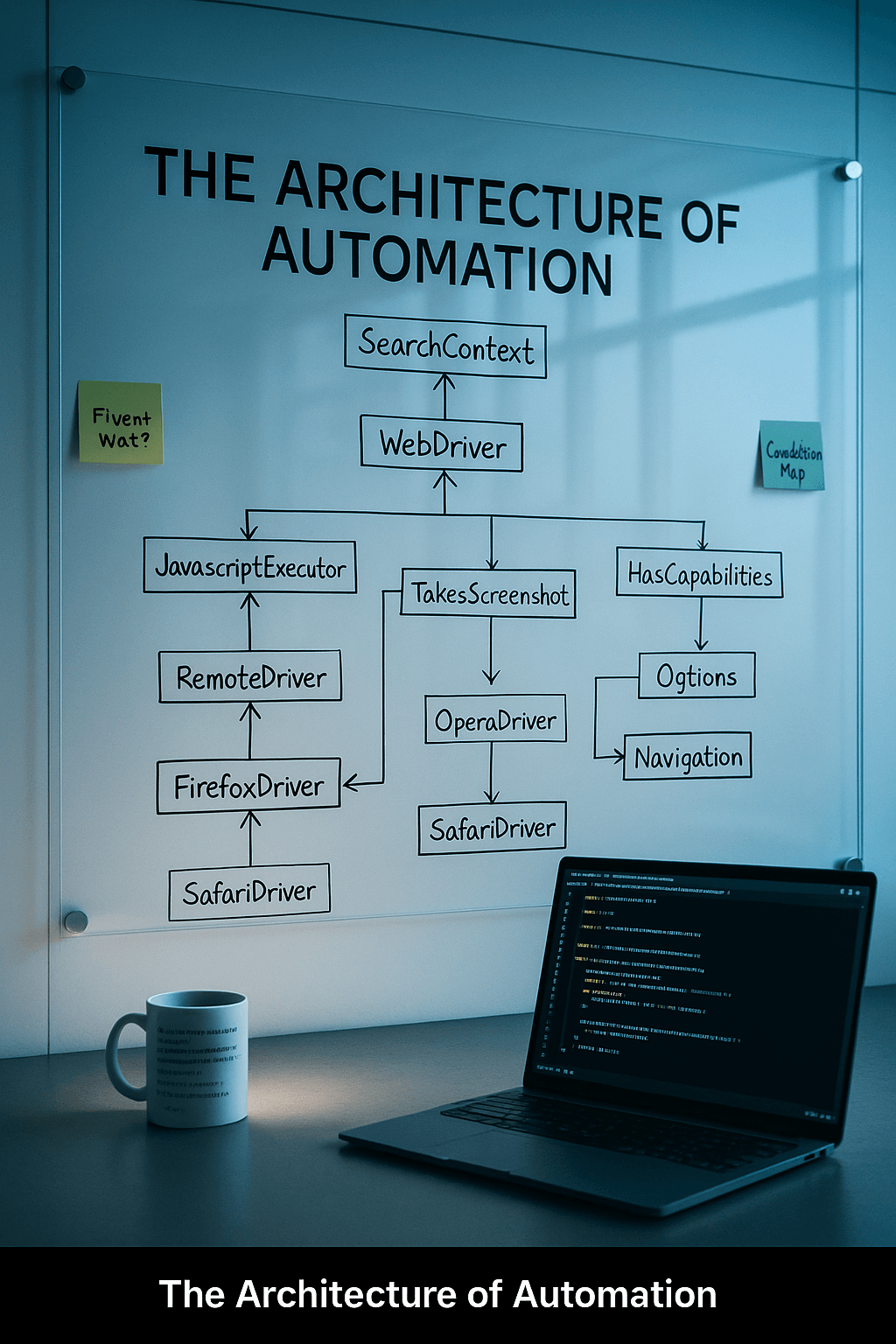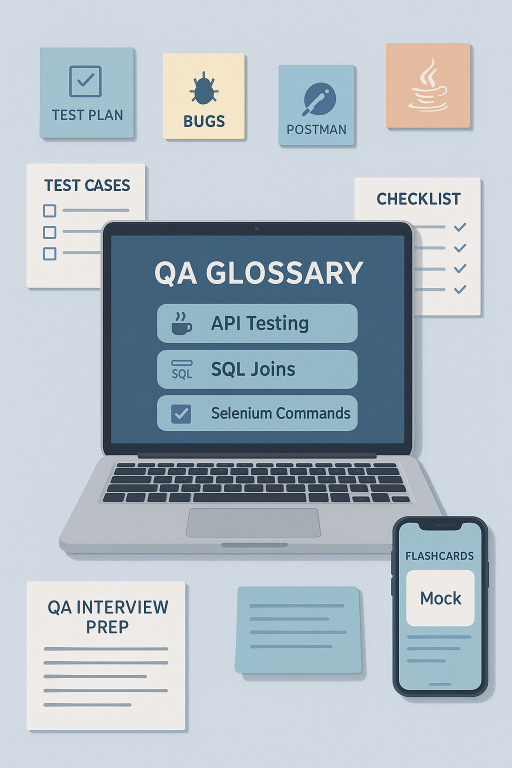The Architecture of Automation: A Love Letter to Structure & Surrender
An Image That Speaks Beyond Sight

At first glance, it’s just a flowchart on glass — a diagram of dependencies and drivers, a logical scaffold for automation. But look again, and something unexpected happens: the architecture becomes intimate. Each node, each connection, whispers something deeper — a language of love, surrender, and beautifully structured trust.
This isn’t merely a map of machine logic. It’s a romantic framework. It shows how we connect, how we wait for signals, how we carry each other forward. It is the story of our emotional navigation — mapped in lines and functions, but lived in moments and meanings.
The Heart’s Memory of Feeling
Begin with SearchContext. That’s where we all start — searching. We open the browser of our being, longing for a match, a method, a moment. Beneath that, the WebDriver becomes the sacred thread, pulling us toward experiences that move us. Not forcefully, but with intention. It waits, listens, and only then proceeds — a beautiful metaphor for the way love should arrive: with patience and presence.
In relationships, aren’t we all just calling functions in one another? Hoping the right version responds? We send out requests — vulnerable, raw — and we pray that someone’s emotional architecture knows how to receive and return. That’s the essence of connection.
Between Stillness and Becoming
Then there’s the elegant branching — the way WebDriver gives rise to JavascriptExecutor, TakesScreenshot, and HasCapabilities. Each node, a metaphor for a new version of us. Each path, a mirror of how we evolve through intimacy.
TakesScreenshot — isn’t that what memory does in love? It captures a single frame, a frozen heartbeat. A sunset. A breath. A smile. Screenshots of the soul.
Meanwhile, HasCapabilities reminds us that we all come with a set of options — beliefs, fears, gifts. The more we explore our partner’s capabilities, the deeper our understanding. That’s the essence of emotional fluency.
Moreover, automation isn’t about control. It’s about trust. It’s the art of releasing manual effort, knowing the process will hold. Just like love: once you’ve aligned the right architecture, it flows. It listens. It returns.
Wounds, Wisdom & Gentle Healing
Look closely, and you’ll find hidden poetry in RemoteDriver, OperaDriver, and SafariDriver. These represent the different ways we show up — based on our past, our browser of choice, our pace of learning. There’s no single route. No perfect method. But every driver leads back to something central: presence.
Some relationships feel like remote drivers — distant, hesitant, requiring extra effort to sync. Others are native and intuitive. Neither is better. Each has a role in our healing journey. And when something doesn’t execute as expected? We don’t give up. We debug. We listen. We change the flow and try again.
Healing is not absence of logic — it’s loving structure. It’s holding space for retries, exceptions, and tender resets.
The Shared Breath of Culture
In every language — code or human — we long to be understood. To be interpreted clearly, without needing to explain every function. The architecture in this image reveals a shared breath across machines and souls: the need for coordination, mutual commands, and faith in unseen systems.
What looks like technology is actually tenderness. It’s how two nodes find each other in a world of noise. It’s how the legacy of one command impacts everything that follows. It’s how, even in silence, the heart knows which action to take next.
So yes, this may be a system. But it is also a love letter. To order. To rhythm. To beautifully designed surrender. To the soft magic that happens when you finally trust the process — and it moves you forward.
Inspired by this reflection? Find more moments of meaning through our curated collections:
To explore how structured expression can heal, visit Healthline on Art Therapy.



